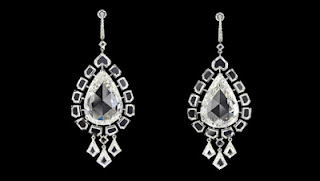According to a report first published on Twitter by Mediaset Journalist Clemente Mimun, it is believed that the thieves may be members of a Croatian and Serbian criminal network which specialized in high value thefts, known to have commited other offenses in Italy and other countries. No information is given in Mediaset’s formal article several hours after Mimun’s tweet, nor in La Repubblica’s subsequent article as to why authorities believe the squad is made up of Serb and Croat nationals or indicating what information aside from general speculation would lead to this assumption.
Given that the security for this event was specifically requested and installed as a condition of the exhibition of the Sheik’s jewels, it is reasonable to believe that the culprits were practiced experts, perhaps those who also had advance knowledge of the Doge’s security routine, and the timing it would take for security to react to their breach.
Whether or not Mediaset was referring to a network of jewel thieves known as “The Pink Panthers”, an elusive gang of jewel thieves which is believed to have members from Croatia, Serbia, Montenegro, and Bosnia and Herzegovina is unclear. This sometimes violent network of jewel thieves are believed to be responsible for more than 200 high value robberies in Europe, Asia and the Middle East. For fifteen years this network of Balkan jewel thieves have committed audacious heists, sometimes by violent means as depicted in the real-life surveillance footage shown in the documentary “Smash and Grab: The Story of the Pink Panthers.”
As in the Venice heist Pink Panther thefts usually involve prior preparation and advanced skill, often casting nondescript individuals to case locations of potential robberies prior to their execution. In one particularly dramatic theft on May 19, 2003 at Graff on New Bond Street in London a member of the group was able to make off with more than thirty million dollars’ worth of diamonds at in less than three minutes.
Whether or not the Doge’s Palace Museum theft is related to the Pink Panthers is unclear, but should they be, they will likely benefit from the inventive perpetrators uncanny ability to fence traceable high-end goods. In the past law enforcement authorities have indicated that the Panther network consisted of between twenty and thirty experienced thieves at any given time, with facilitators in various cities providing logistical assistance. Often, stolen diamonds end up in Antwerp as well as among the collections of indifferent clients in wealthy countries like Italy, France, Russia and Switzerland.




